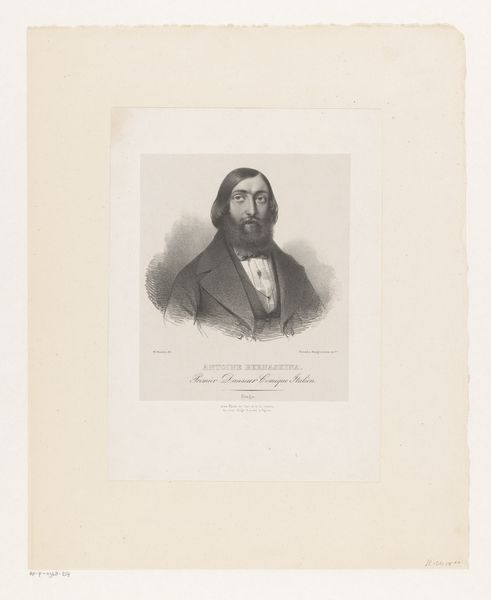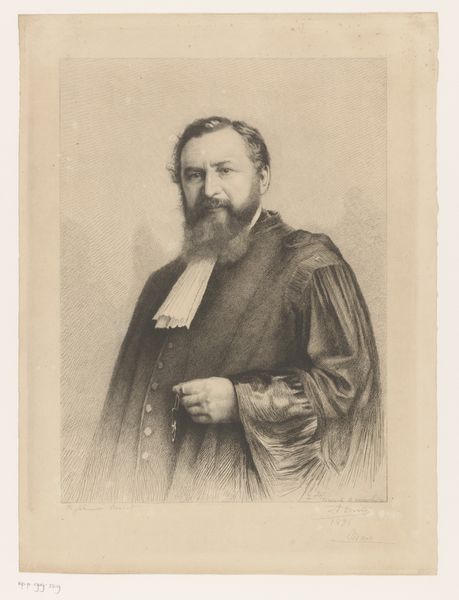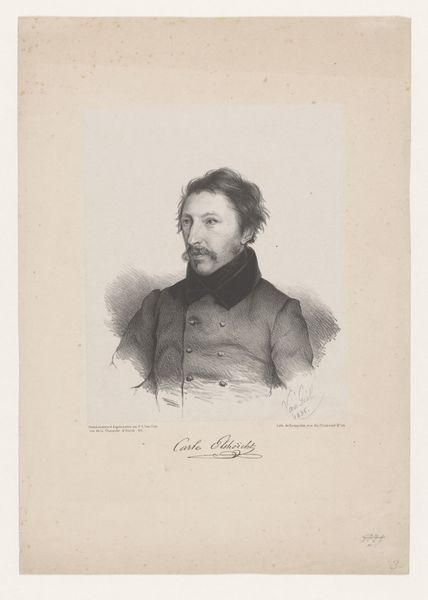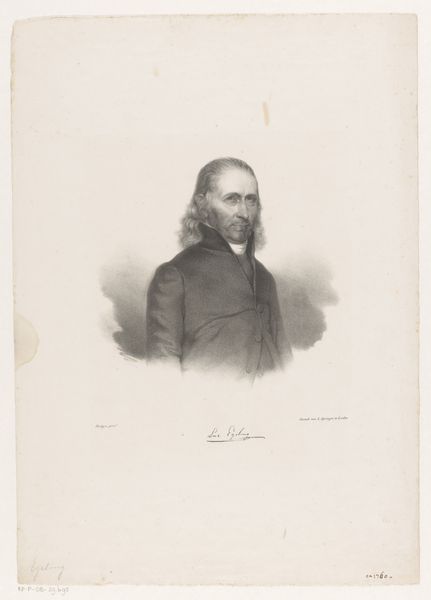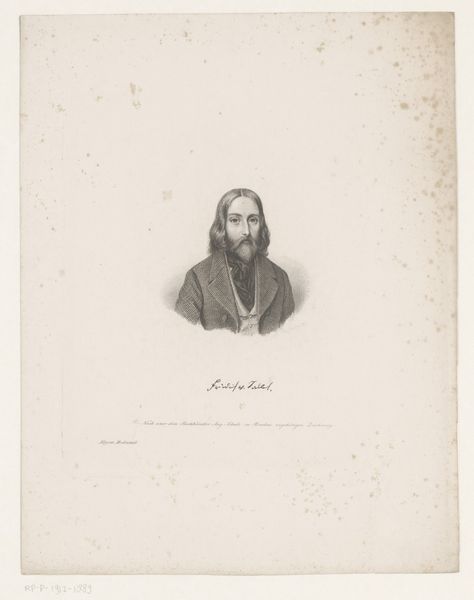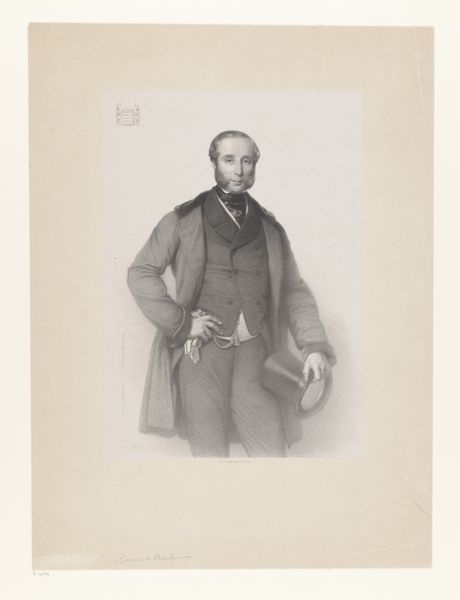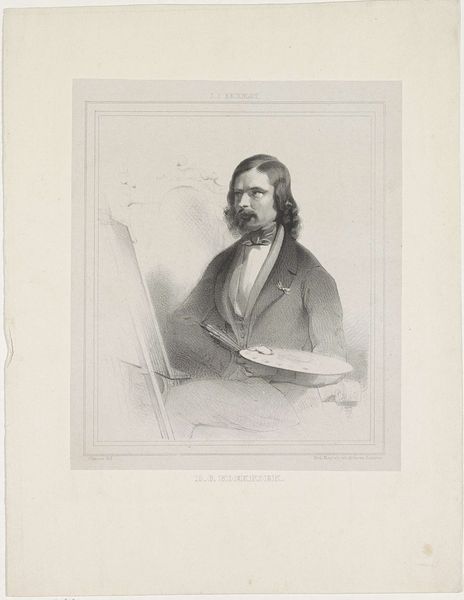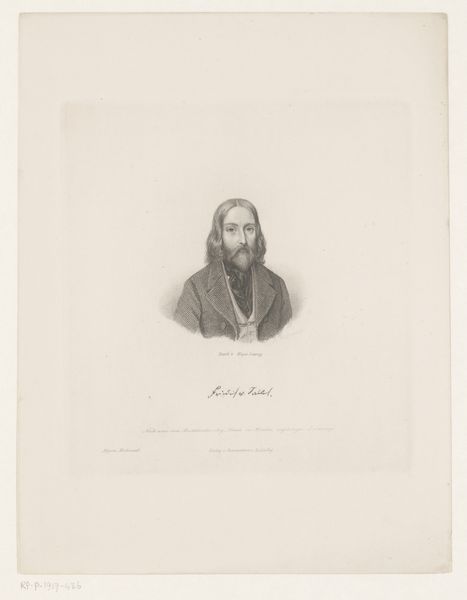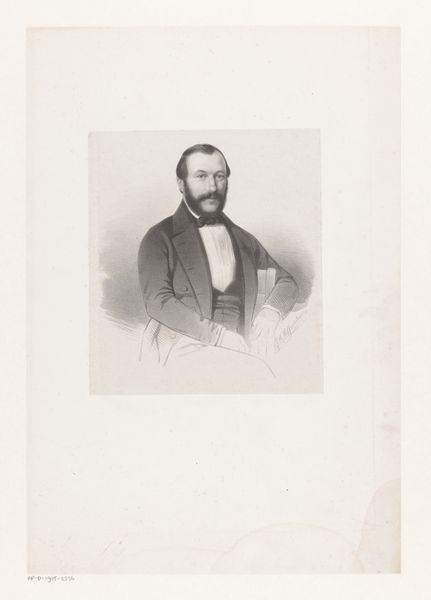
Dimensions: height 593 mm, width 457 mm
Copyright: Rijks Museum: Open Domain
Curator: Let's turn our attention to this intriguing piece titled “Portret van een onbekende man, mogelijk F.L. Urban,” or "Portrait of an unknown man, possibly F.L. Urban." Created sometime between 1875 and 1905, it appears to be a lithograph and engraving over graphite. Editor: It strikes me as quite somber, actually. The muted tones and the sitter’s intense gaze create an immediate impression of gravitas. I'm particularly drawn to the rendering of the coat. Curator: Observe how the artist uses light and shadow. The modeling of the face, in particular, relies heavily on contrast to define form. It presents a calculated use of chiaroscuro, almost theatrical. How do you interpret this stylistic choice in the context of 19th-century portraiture? Editor: That drama is classic Romanticism. Think about the socio-political tensions of the time—growing nationalism, industrialization, and revolution. A portrait wasn’t just a likeness; it was a statement, often about status or political leanings. The sitter's long beard and slightly disheveled appearance present an interesting challenge to the social portrait, though the expensive-looking coat seems to subvert such challenge to middle class tastes. Curator: Indeed. Consider how the linear precision of the engraving contrasts with the softer, more fluid graphite work. These opposing textures create visual tension, pulling the eye across the surface and activating the space. There's a controlled energy within this framework, enhanced by the subject's contemplative aspect and his pose that invites us to engage more closely. Editor: Precisely! The ambiguity of the subject—an unknown man possibly identified as F.L. Urban—further reinforces the broader issue of representation. He seems conscious of being observed and attempts to present himself, his political persona, in what appears to be a precise alignment to the expectations of the time. The unknown aspects leave it open to broad cultural interpretation. Curator: In terms of purely visual design, what captivates me most is how the subtle gradations of tone, particularly in the face, transform an ostensibly simple image into a deeply evocative composition. The lack of bright hues allows formal structures to step into full light. Editor: And I’m left pondering who this unknown man really was, what his stories were, and how his image resonates—or clashes—with our understanding of the era’s political climate and individual expression. The lack of definition of his public status beyond middle class is one thing that still puzzles me.
Comments
No comments
Be the first to comment and join the conversation on the ultimate creative platform.



